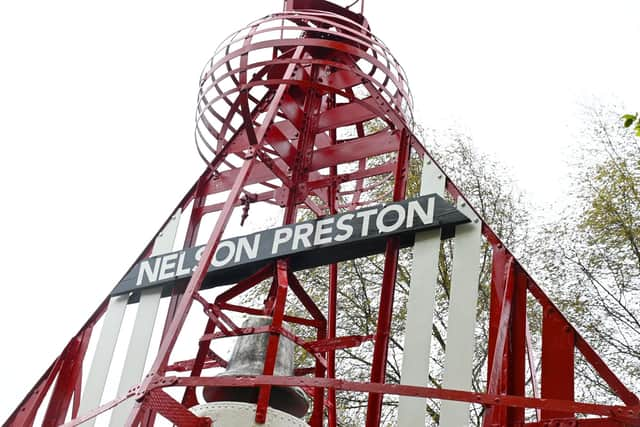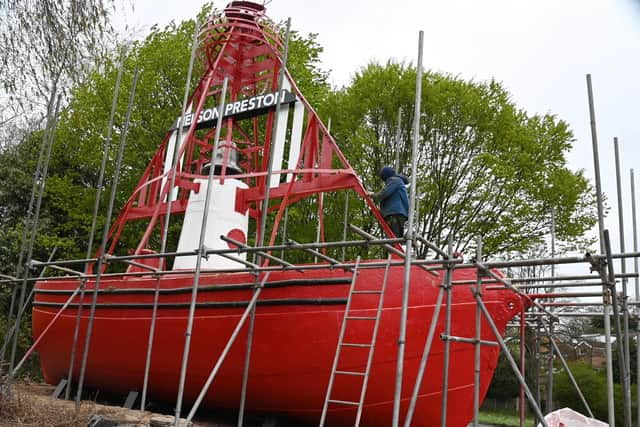Oh buoy! Preston docks landmark restored to its best
and live on Freeview channel 276
Tarpaulin and scaffolding has been removed from the Nelson Buoy one of the two iconic red boat buoys on Pedders Way off Riversway at Preston Docks, after restoration work over recent weeks by local business Sandblasting Lancashire North West.
The refurbishment of the other Buoy is set to be completed in the next few weeks.
Advertisement
Hide AdAdvertisement
Hide AdIn December, the Post revealed how locals felt ashamed of the “disgusting” state of two red boat buoys marking the original course of the River Ribble, which was diverted in the 19th Century to enable the construction of Preston docks.


Preston City Council owns the bell buoys and in December vowed to re-paint them “in the near future”.
The last time this was done was in 2010.
Adrian Robinson, Interim Director of Environment and Property at Preston City Council, said: “Our plan to re-paint and refurbish the buoy structures at Preston Docks is well under way, with this first Nelson Buoy now ready for residents and visitors to Preston to see.


“We thank the contractors involved in this project, local company Sandblasting Lancashire, for their expertise and attention to detail in bringing the buoys back to life and ensuring they are a welcome sight and gateway to Riversway for many years to come.”
Advertisement
Hide AdAdvertisement
Hide AdThe two Nelson buoys at the entrances to the Riversway estate were purchased in 1890 from the Belfast Harbour Authority.
One buoy was placed on station approximately 17 miles out in the Ribble estuary while the second was in storage at the Docks. Their job was to mark a safe anchorage for ships wishing to enter the estuary and the port of Preston, using a paraffin light and a bell which rang every 30 seconds.
Weighing around 40 tons they were held in position by a five tonne sinker and 310 ft of 1 5/8ths chain.
The Buoys were removed with the closure of the port, but were brought back to Preston and lifted out under the 100 tonne crane for a major overhaul prior to being put in their present positions.